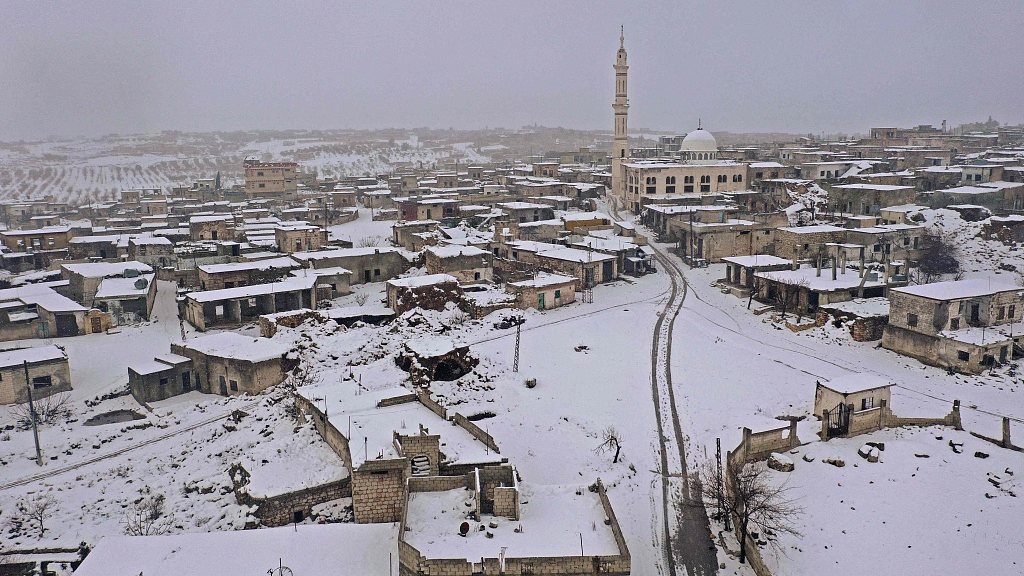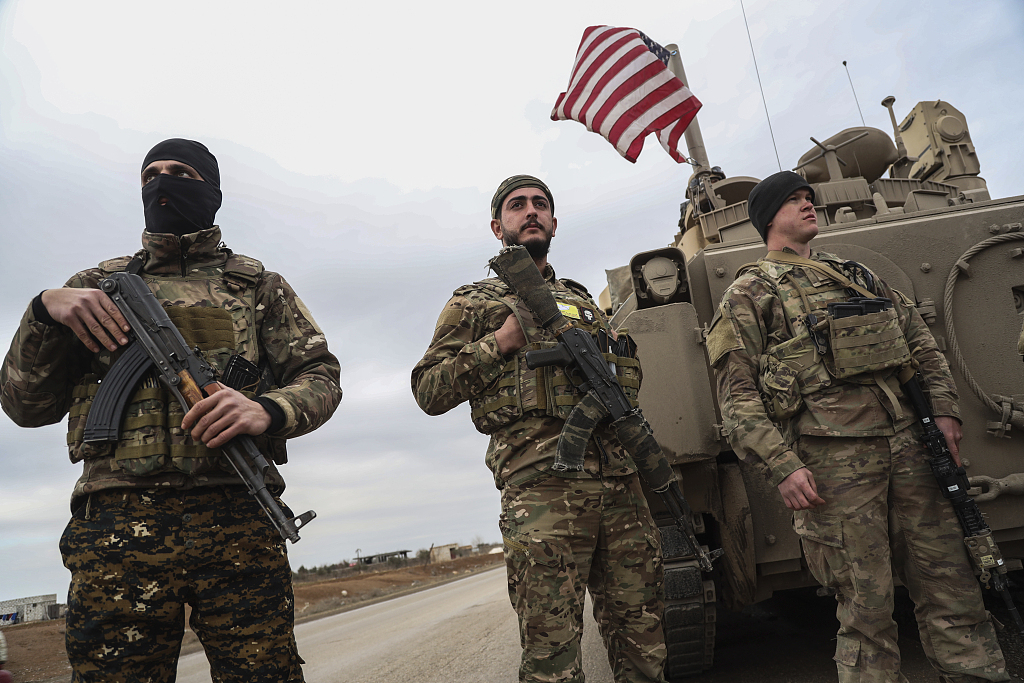
Snow covers the Jabal al-Zawiya region in Syria's rebel-held northwestern Idlib province, March 13, 2022. /CFP
Snow covers the Jabal al-Zawiya region in Syria's rebel-held northwestern Idlib province, March 13, 2022. /CFP
Editor's Note: Freddie Reidy is a freelance writer based in London. He studied history and history of art at the University of Kent, Canterbury, specializing in Russian history and international politics. The article reflects the author's opinions and not necessarily the views of CGTN.
While the eyes of the world are on Ukraine, in the Middle East, Syria is marking 11 years since the beginning of the civil war. With hundreds of thousands dead after over a decade of brutal conflict, what is the present situation in Syria and are we any closer to a resolution?
Civil war broke out in Syria in 2011 in a spate of civil unrest which spread across the region in what would become known as "The Arab Spring." In Syria the uprising was against President Bashar al-Assad. As the conflict evolved, Assad received support from Russia, Hezbollah, Iran and Iraq, with the opposition forces backed by Turkey.
However, the conflict enabled the rise of ISIL in a development which would split and galvanize the complicated alliances as the caliphate seized vast territorial areas. To combat this threat another faction was formed, the U.S.-led Joint Taskforce.
The fragmented nature of the fighting has led to extreme and indiscriminate violence as the death toll soared in urban centers. The United Nations Human's Rights Council stated that amid the intensity, "pro-government forces, but also other warring parties, resorted to methods of waging war and used weaponry that minimized risk to their fighters, rather than minimizing harm to civilians."
Owing to the rupturing of the state and the collapse of the country's systems and infrastructure, calculating the number of deaths has proven difficult. The UN, however, estimates that at least 350,000 Syrians had died in the conflict as of 2021.
As the conflict intensified, indiscriminate weapons such as thermobaric bombs, cluster munitions and chemical weapons were deployed. A UN investigative team found that chlorine gas had been used in Talmines with mustard gas also deployed north of Aleppo.
The Western coalition had warned President Assad that any use of chemical weapons as they saw it, would represent the crossing of a "red line" leading to an intervention. Although former UK Prime Minister David Cameron did concede that "there could be no 100 percent certainty." Ultimately there was no response.
In the wake of the scandal over the pretext of the Iraq war, then UK opposition leader Ed Miliband voted down the UK government's plan for a military response in one of the most shameful abdications of duty in recent UK political history. The move was perceived by the Obama administration as the prevailing political sentiment and the U.S. declined to respond to the attack.

Syrian Democratic Forces and American soldiers stand near a prison that was attacked by ISIL militants in Hassakeh, Syria, February 8, 2022. /CFP
Syrian Democratic Forces and American soldiers stand near a prison that was attacked by ISIL militants in Hassakeh, Syria, February 8, 2022. /CFP
With an unlikely coalition of Syrian, Russian, Turkish, Kurdish and U.S.-led task forces pushing ISIL back, the U.S. withdrew from their buffer region to the north, leaving their Kurdish allies to fight the forces of fellow NATO member Turkey.
Amid the political scheming of a civil war which became a proxy war, according to the Syrian Observatory of Human Rights, an estimated 50 percent of Syrians are said to be displaced, representing half of the entire population. Some 6.8 million have left Syria altogether with an additional 6.7 million internally displaced.
Throughout the conflict, Syrians have witnessed the destruction of their cities such as Aleppo and Homs. They have endured drought, epidemics, the destruction of the country's cultural heritage at Palmyra but of course above all, the loss of their homes, their livelihoods and their families and friends.
The nation remains fragmented. The U.S. continues to hold territory on the Iraqi border at Al-Tanf, while ISIL has gone to ground, the threat of resurgence remains. Turkish and Kurdish forces also hold significant areas of northern Syria.
The Russian intervention of 2015 brought about a rapid reversal of fortunes with Assad's troops who stepped back from the brink. Such a shift comes a terrifying cost. The suppression of ISIL in the north holds the key for reunification.
Only such an outcome will see the U.S. withdraw from the Iraqi border as the threat of overspill abates, and the risk to Turkey will also be reduced.
Extremism thrives in suffering, so the task of reconstruction and the establishment of basic services must precipitate an end to hostilities. Is Assad's government capable of such a move?
After over a decade of war, such a task cannot be taken unilaterally, a great deal of international support and aid will be needed. Amid competing interests on the world stage, Syrians find themselves again at the mercy of others.
The international community must learn that to truly bring about a lasting peace and resolution, more must be done to ensure the safety of civilians and the rapid re-establishment of basic services in order for the seeds of radical extremism to not take root and entrench sectarian violence for generations.
(If you want to contribute and have specific expertise, please contact us at opinions@cgtn.com. Follow @thouse_opinions on Twitter to discover the latest commentaries in the CGTN Opinion Section.)

